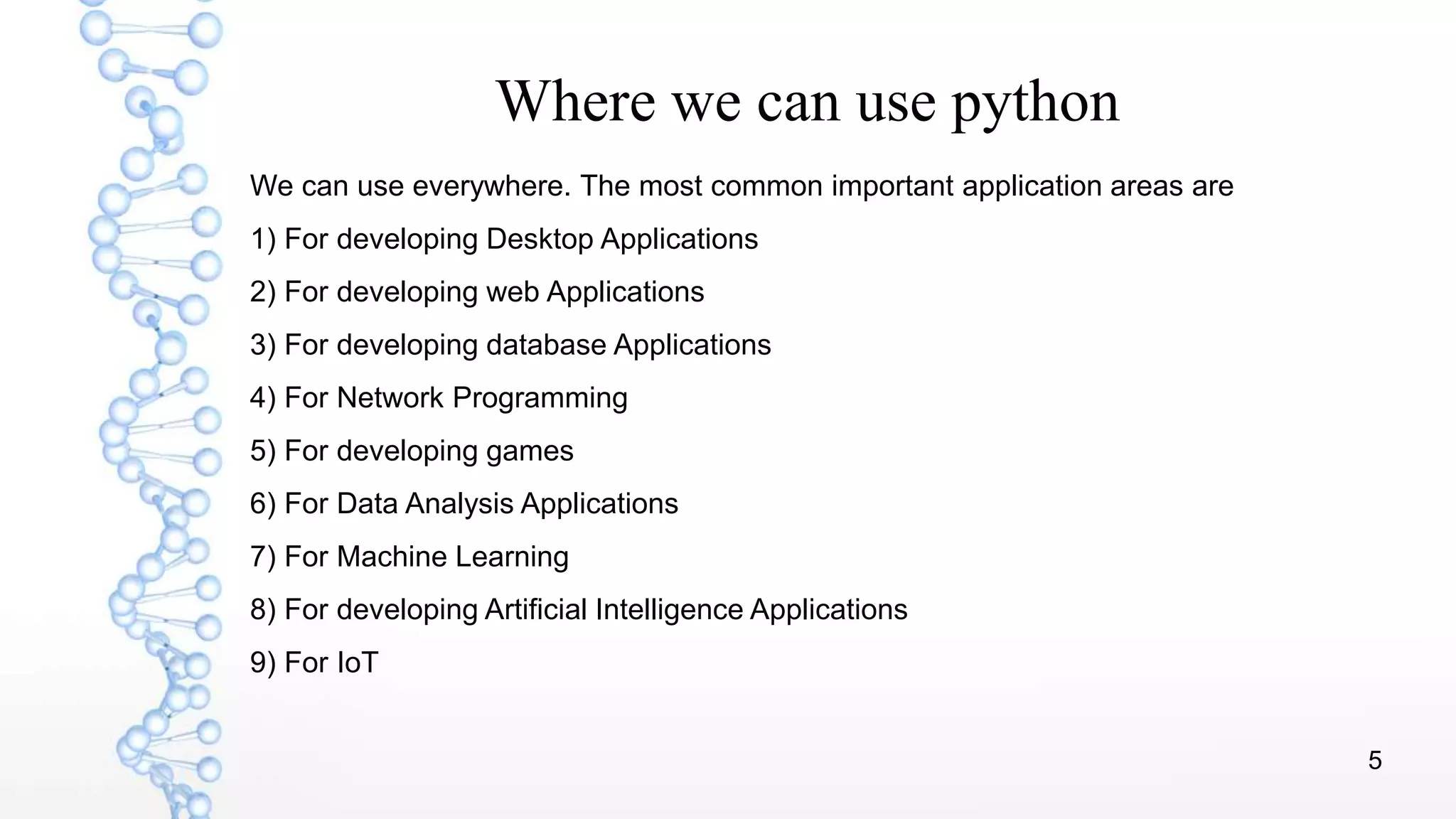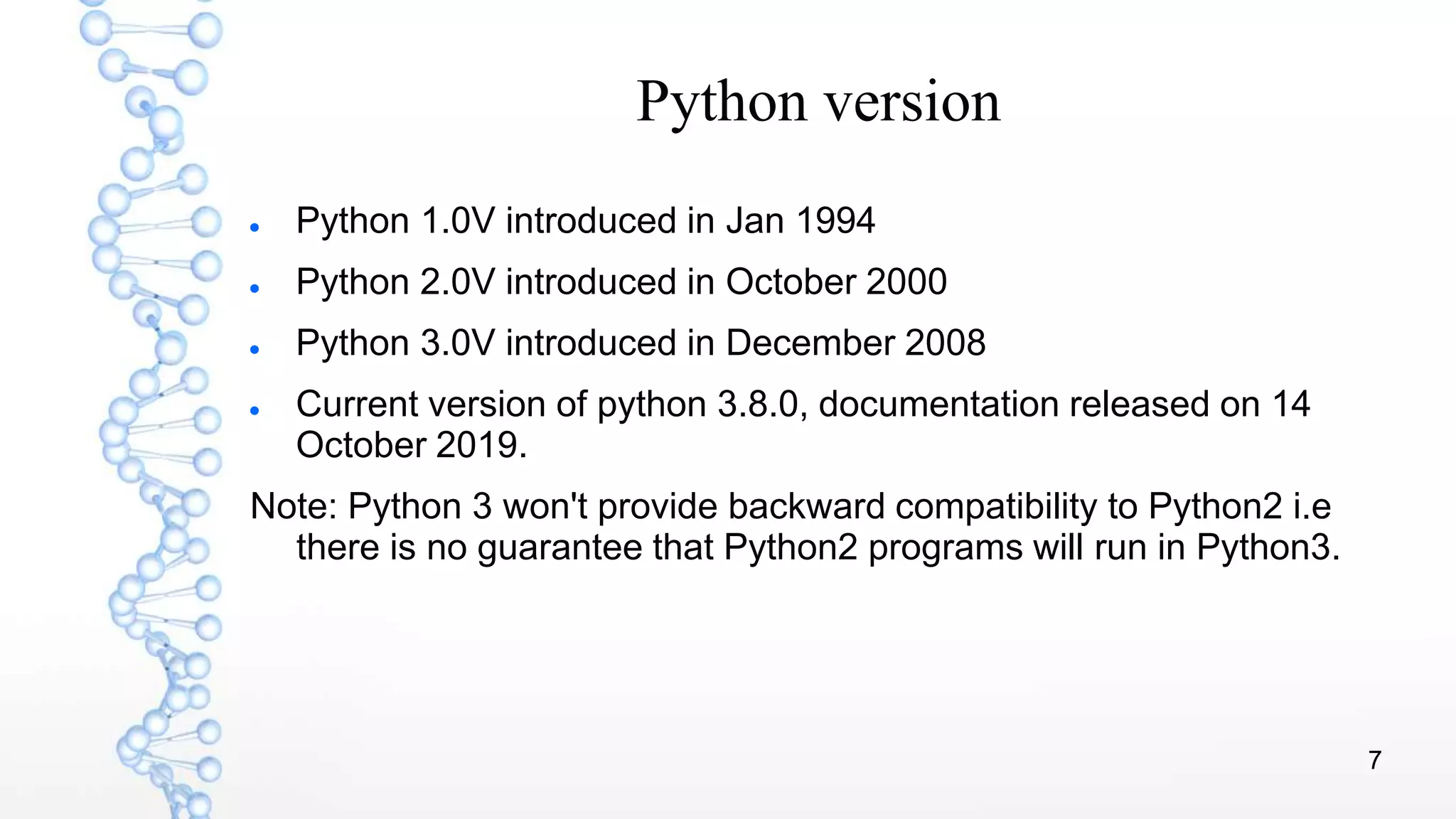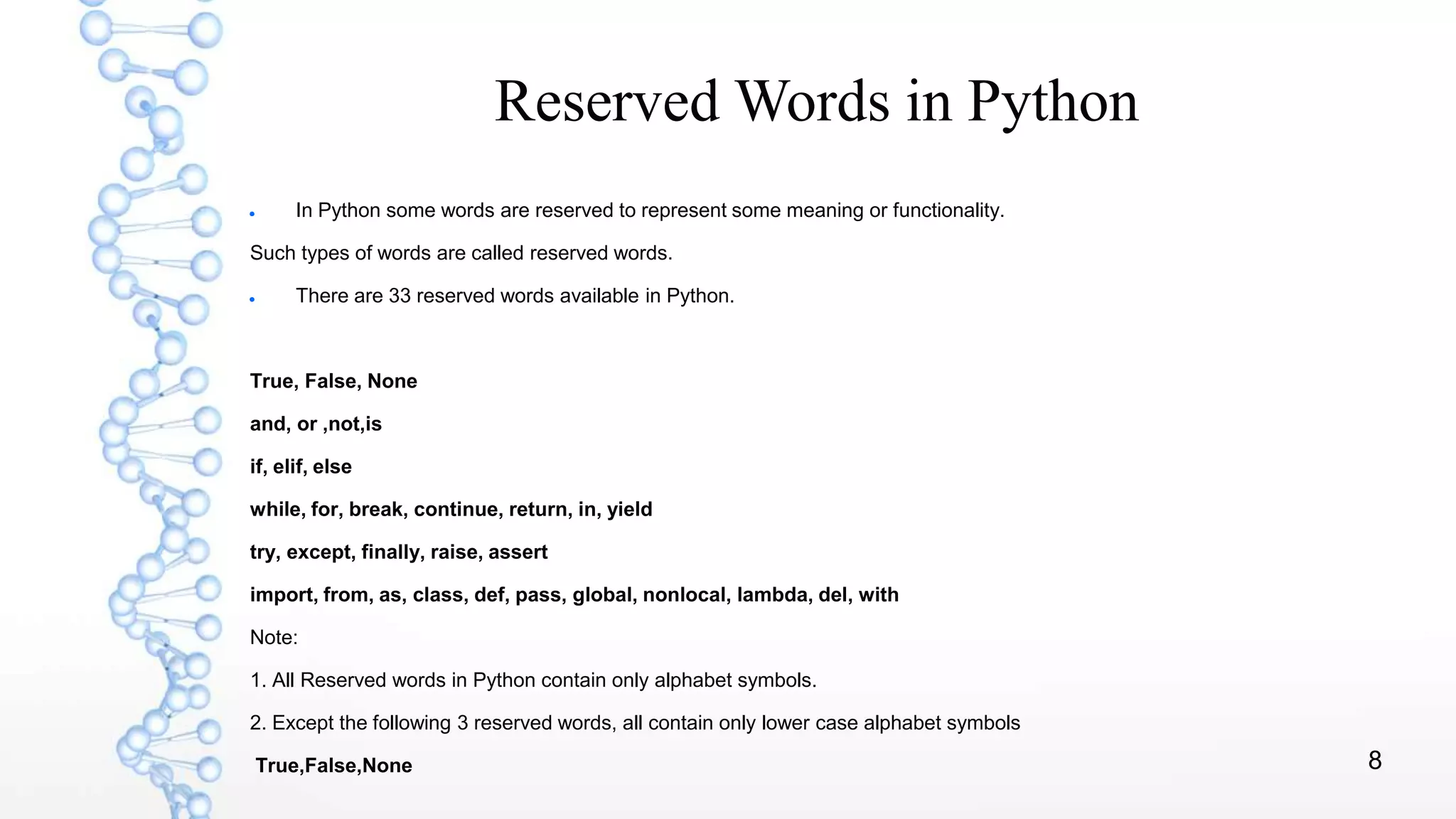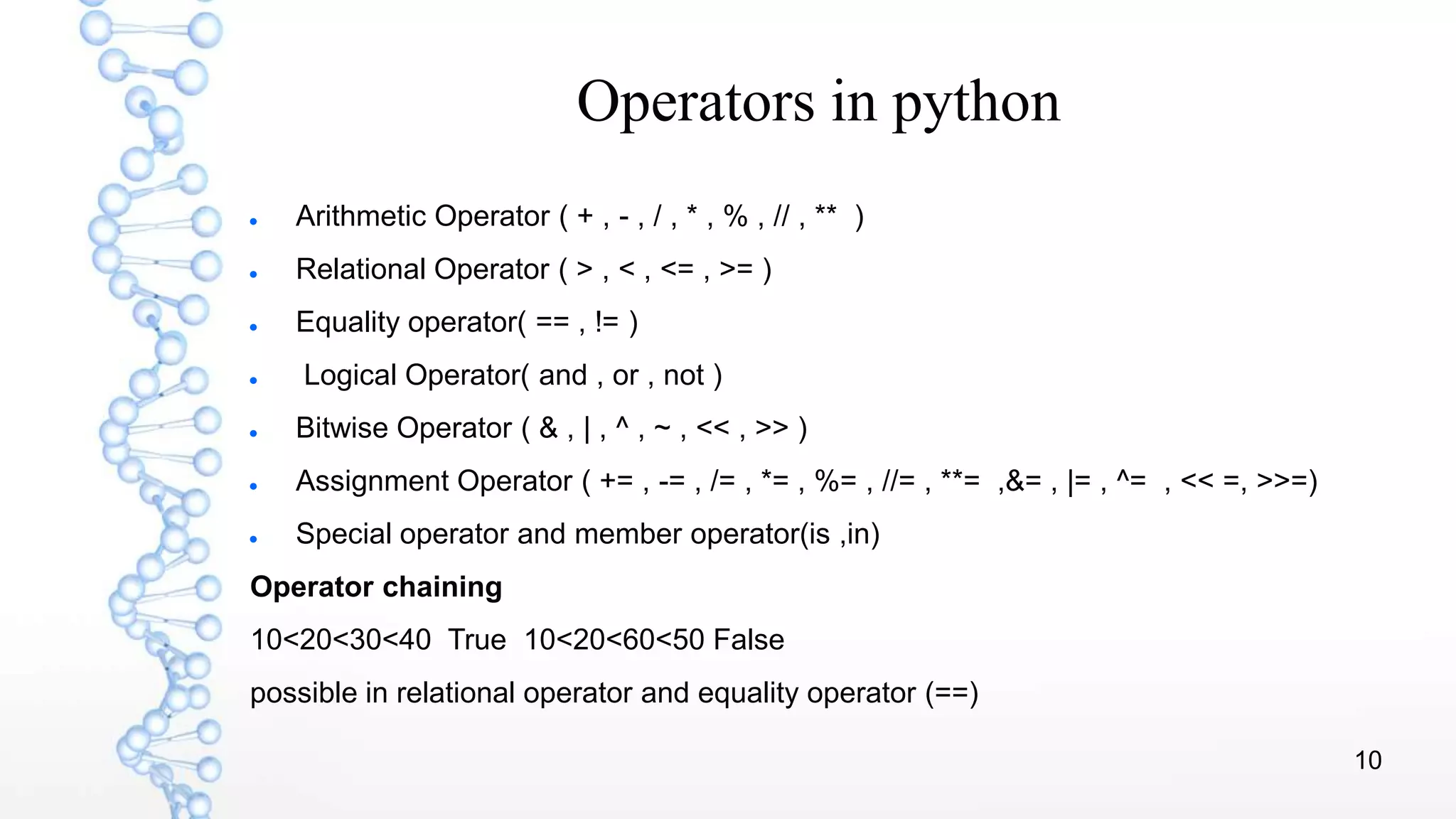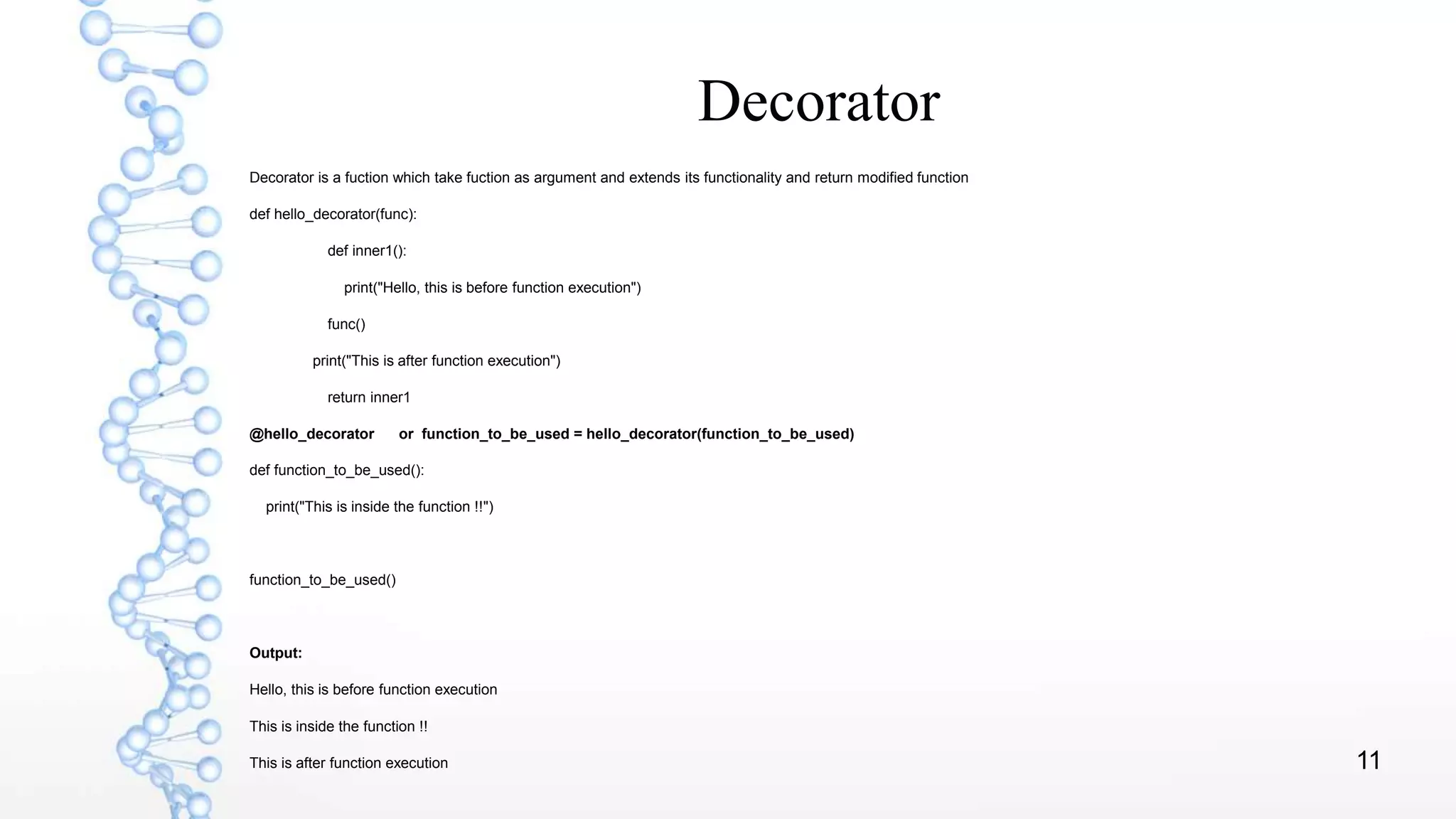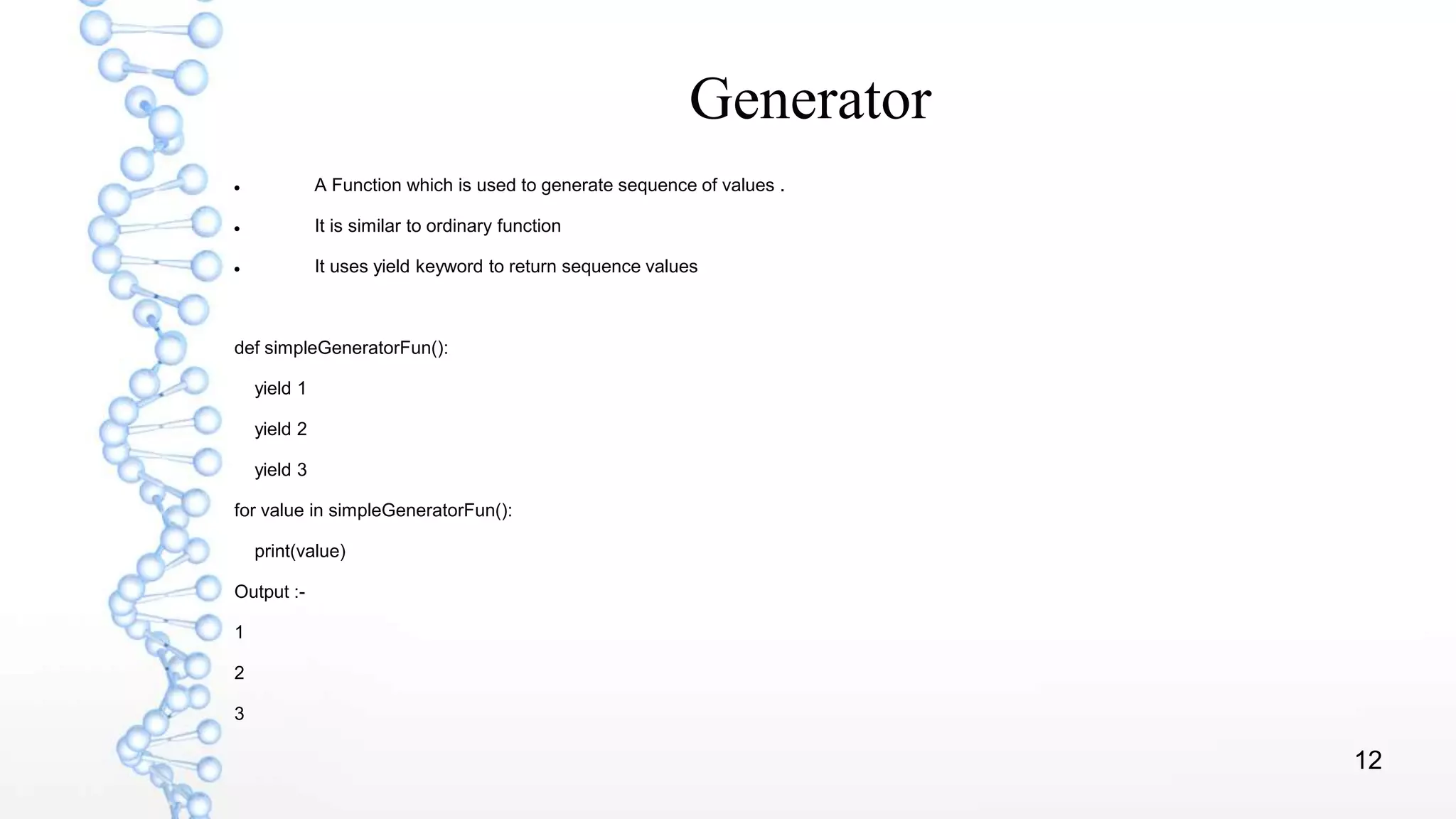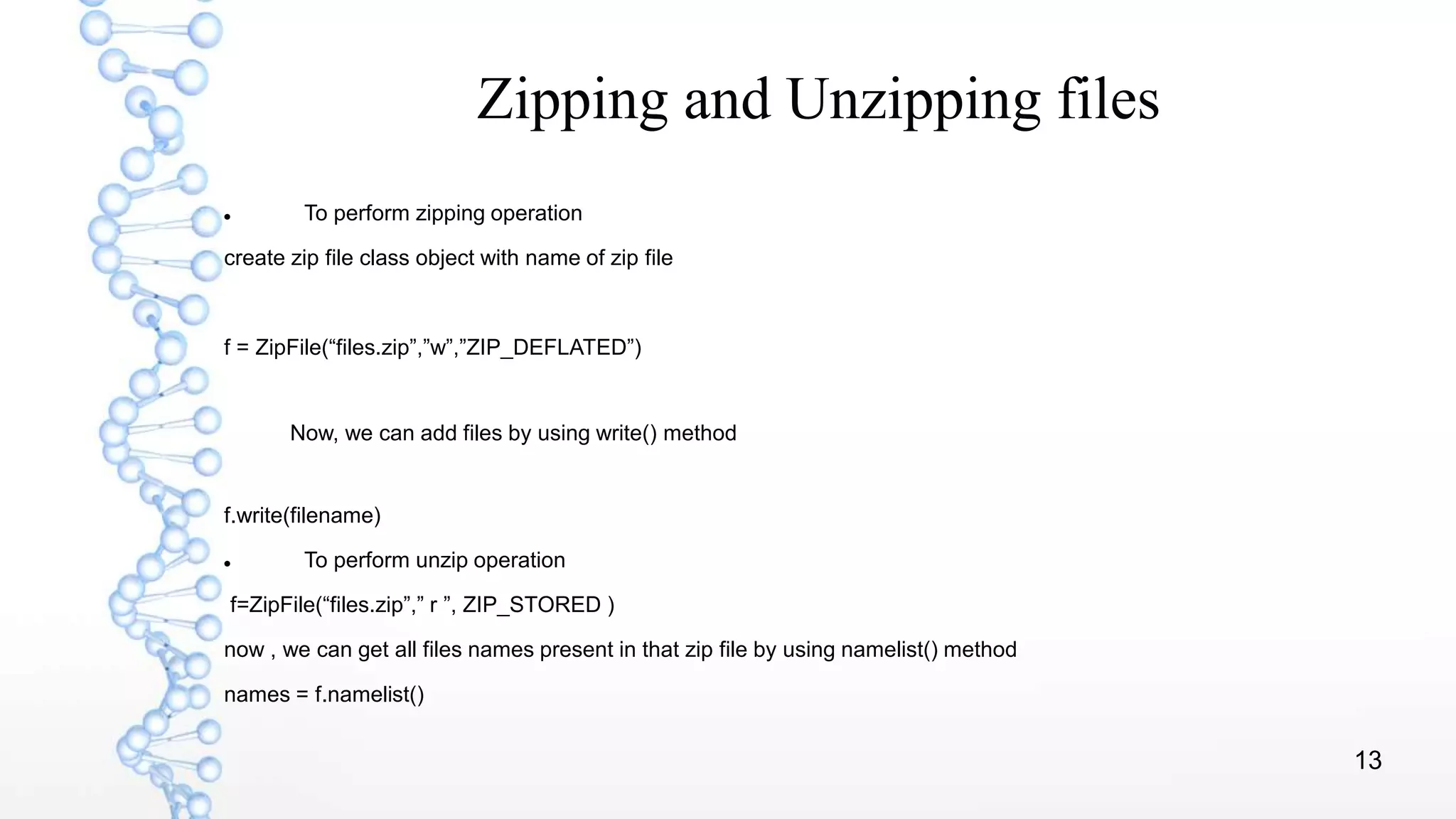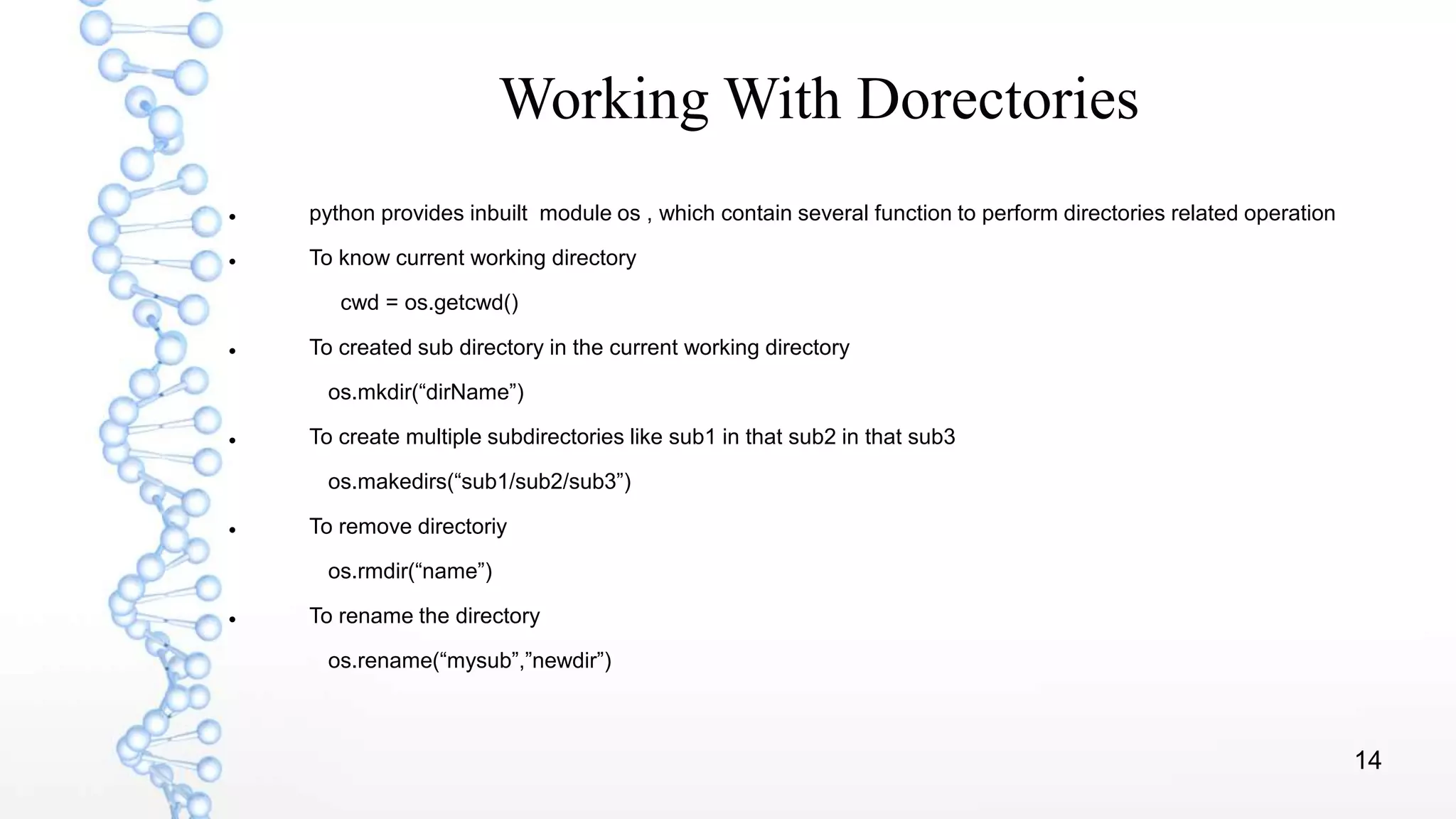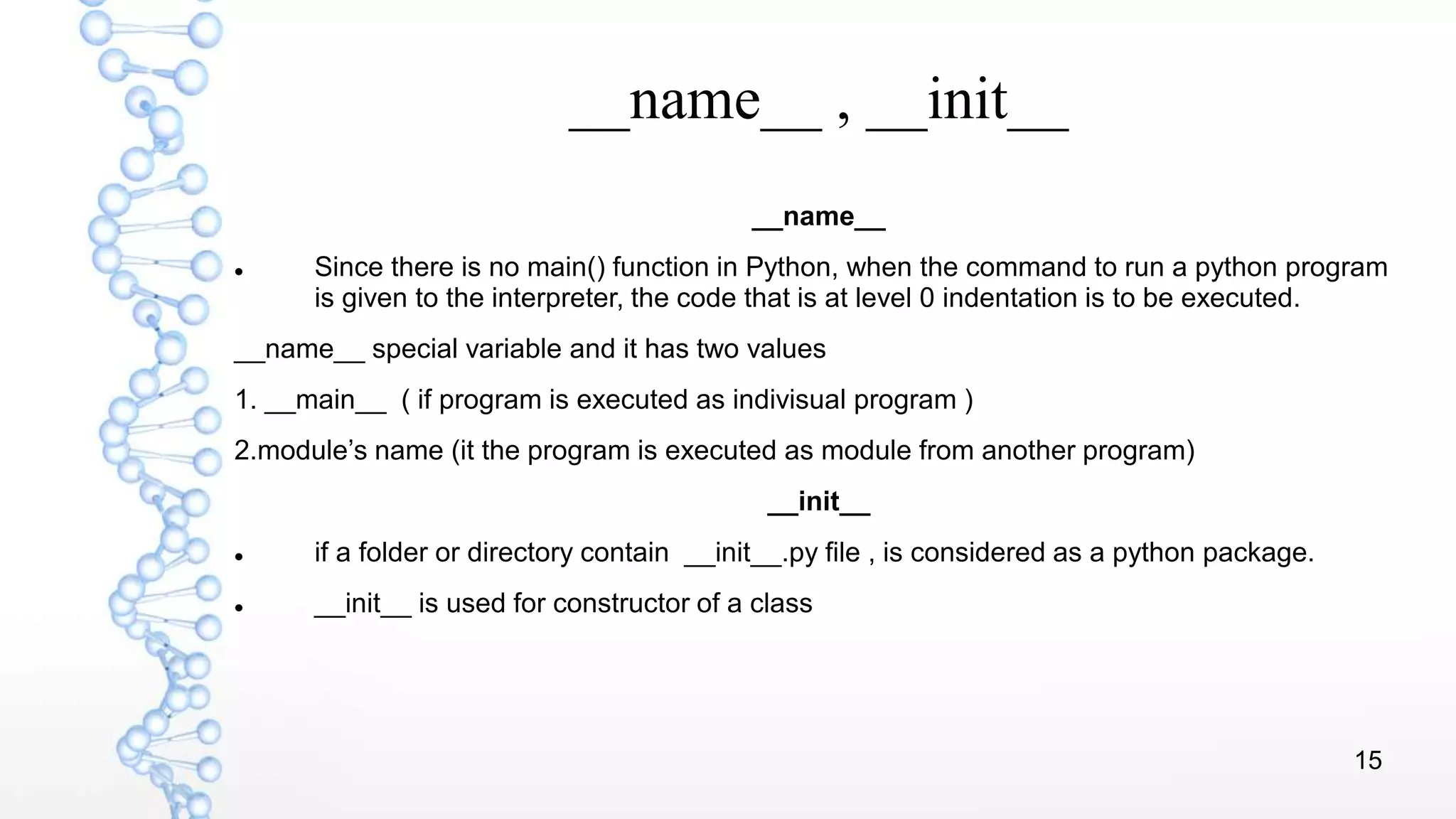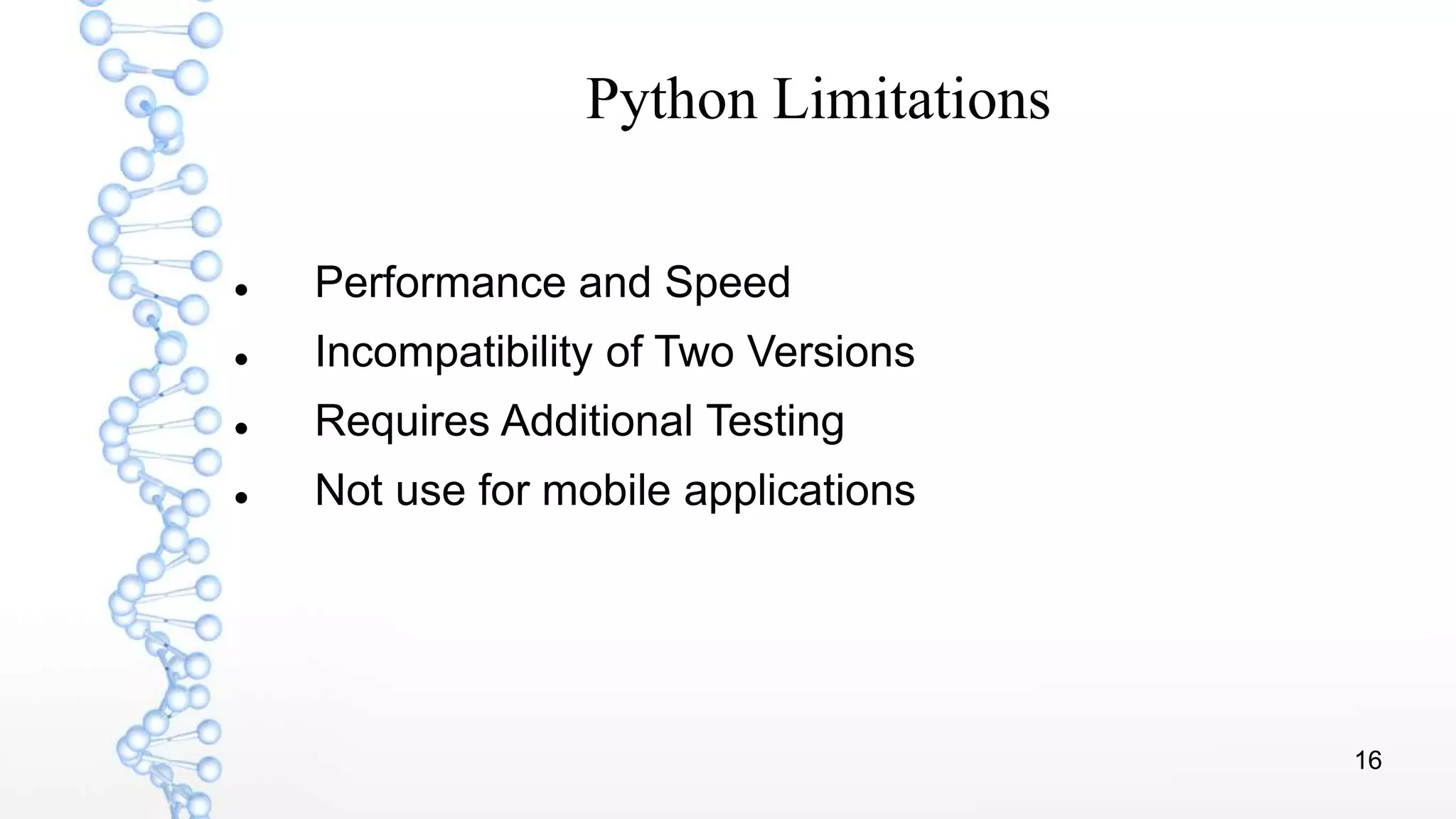Python is a general purpose programming language created by Guido van Rossum in 1991. It is widely used by companies like Google, Facebook, and Dropbox for tasks like web development, data analysis, and machine learning. Python code is easy to read and write for beginners due to its simple syntax and readability. It supports features like object oriented programming, procedural programming, and functional programming.
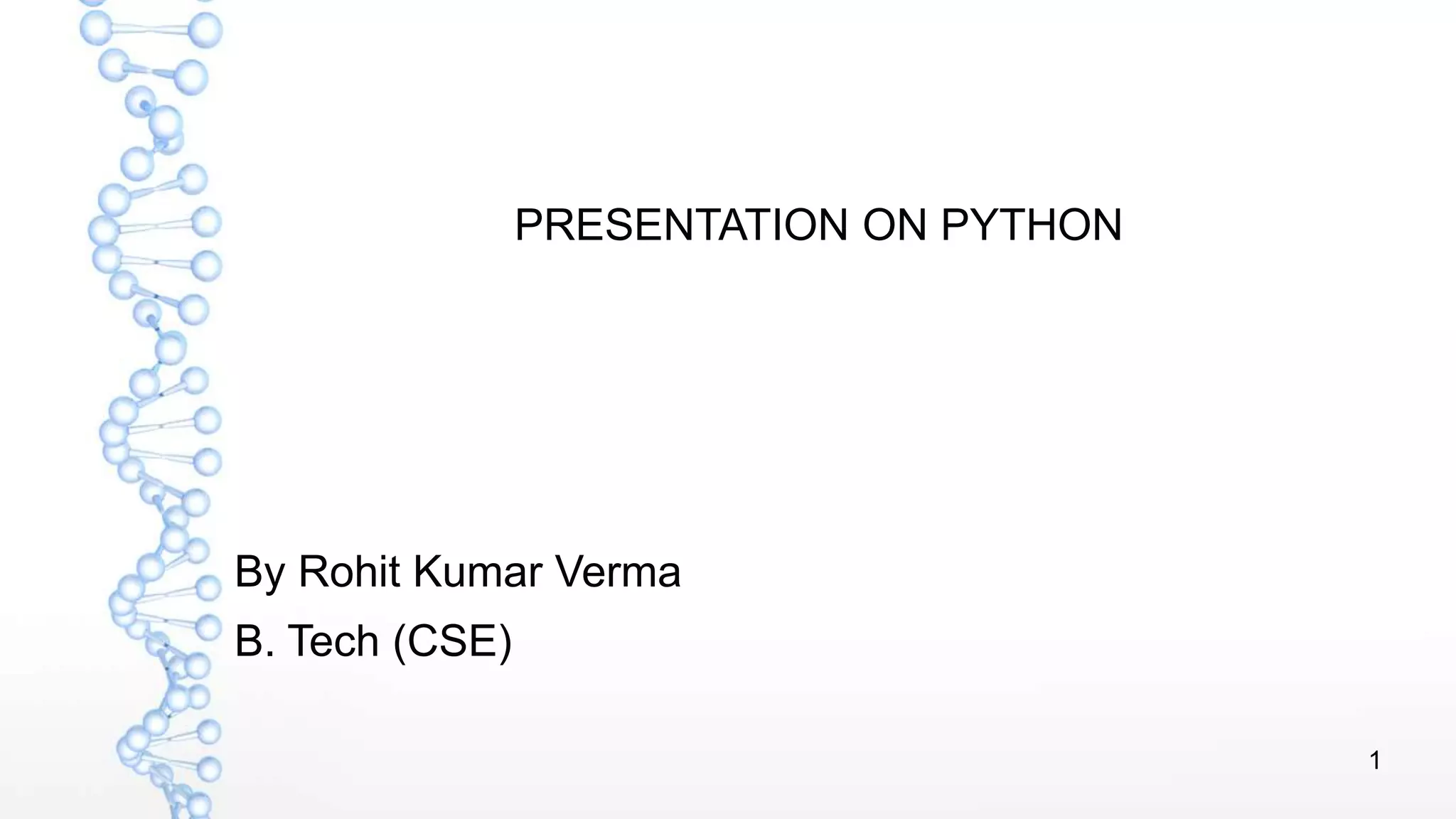

![3
Program to add two no.
Java program
public class Add{
pulic static void main(String []args){
Int a,b;
a=10;
b=20;
System.out.println(“Addition is =”+(a+b))
}
}
C-Program
void main()
{
int a,b;
a =10;
b=20;
printf("The Sum:%d",(a+b));
}
Python program
a,b=10,20
print(“the sum is =”,(a+b))](https://image.slidesharecdn.com/pythonppt-191126084835/75/Python-ppt-3-2048.jpg)

